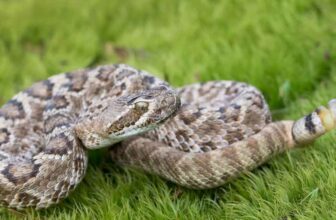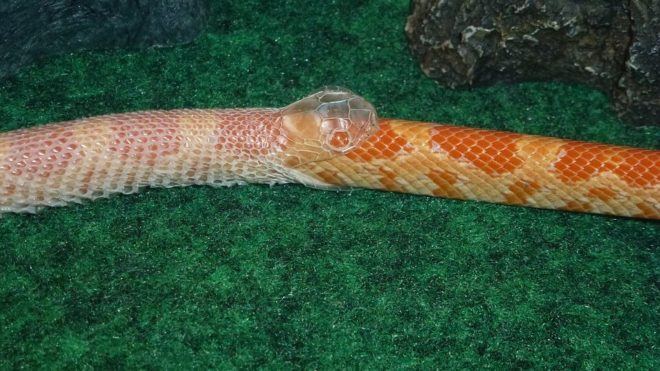Venomous snakes are some of the most universally feared creatures around the globe. Their ability to inject potent venom into their prey with their specialized teeth to subdue, it has struck terror into the hearts of many who fear even a chance encounter with them. There are roughly 600 known venomous snakes species on Earth, but only about 10% carry venom potent enough to seriously damage a human being.
In the United States, there are between 7,000 and 8,000 snake bites experienced by humans every year, but only about 5 or 6 results in death. However, it is good to be aware of those snakes around the world that could do significant damage and cause fatal results if they were to administer their deadly venom to humans.
On this list, we will learn about the world’s 20 most venomous snakes, ranked by the toxicity of their venom. If found, these venomous species are better off left to their own habitat.
What Makes A Snake Venomous?
Before we get into our list of the 20 most venomous snakes, we should address what it is that makes the snake venomous exactly. One of the most common things people confuse about venom is generally equating it with poison, but there is an important distinction. In order to take its harmful effects, the poison must be swallowed. Venom, on the other hand, is injected by venomous snakes through a bite with their teeth or fangs.
People also incorrectly believe that snakes inject venom with every bite, but their venom is not infinite and therefore is precious, so the snake will not inject venom every time it bites, using it sparingly. The World Health Organization’s research found that about half of bites from venomous snakes are “dry” bites or those that did not inject any venom into a human.
Venomous snakes are also not monolithic. In fact, they break down into three primary categories:
- Vipers: The best known venomous snake family is Viperidae or vipers. Every snake in this serpent family is venomous and among them, they include Moccasins, Rattlesnakes, and Copperheads. Every viper has large fangs at the front of their mouths that fold against the mouth’s roof when not in use.
- Elapids: The elapids also have fangs in front of their mouths, but unlike those possessed by vipers, they are shorter and don’t fold against the roof, remaining stationary instead. The Elapids include sea snakes, coral snakes, mambas, kraits, and cobras.
- Colubrids: Finally, there are the colubrids which include many snakes more commonly found around the world like Milk Snakes, King Snakes, Rat Snakes, and Garter snakes. Some members of the colubrids are venomous, but many are not. Those who are, typically have small and relatively weak fangs which are inefficient in terms of injecting venom, which makes their bites harmless to humans.
About Snake Venom
Snake venom is a truly fascinating entity, comprised of some of the most complex compounds in the world, with each venom being distinct depending on the species in question. As an evolutionary factor, the nature of the venom is such that it is effective at subduing the snake’s most common type of prey and is also dependent on the part of the body it needs to attack.
The toxicity of snake venom is normally tested by the LD 50 test, which is a test that qualifies venom as more toxic when it is deemed fatal to over 50% of animals in a dose group. The lower the LD 50, the more potent the venom. While this may, on its face, seem counterintuitive, the reason is that the lower the venom is in the LD 50 measure, the less of it is required to prove lethal to the subject of the bite.
For instance, the American Copperhead’s venom scores 2.711 mg/kg in the LD 50 test, while an Inland Taipan has a score of 0.013 mg/kg. That means that the Taipan’s venom is far more potent, making the Taipan a more deadly venomous snake.
There is no hard rule to snake venoms. They are complex and vary significantly across the spectrum. On top of that, every snake differs in how much venom it yields per bite, its potency, and the probability of the bitten party experiencing a “dry bite.” Therefore, the following ranked list of the world’s most venomous snakes is ranked starting with the snake with the lowest LD 50 score.
The Most Venomous Snakes In The World
1. Eastern Brown Snake (Pseudonaja Textilis)
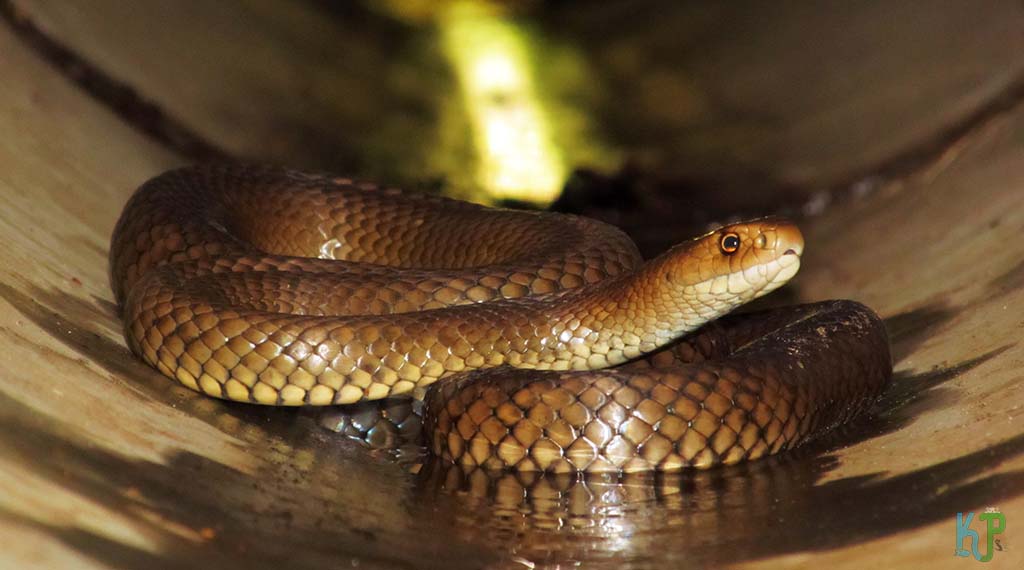
In Australia, no other snake can account for as many fatalities as the Eastern Brown Snake. They are solid in color (typically black, grey, or brown), and are often found residing near human habitations. This extremely dangerous snake is the world’s deadliest, with a terrifying LD 50 score of 0.001 mg/kg. Their venom is superbly hemotoxic, very rapidly attacking the blood and stopping it from clotting. A bite from the Eastern Brown Snake can, therefore, result in internal bleeding and kidney damage, as well as a possibility of neurotoxic paralysis.
The Eastern Brown Snake uses its potent venom to quickly put down amphibians, birds, and mammals alike. They are elapids, and they are only one of the Australian snake species that will be found on this list.
2. Mainland Tiger Snake (Notechis Scutatus)
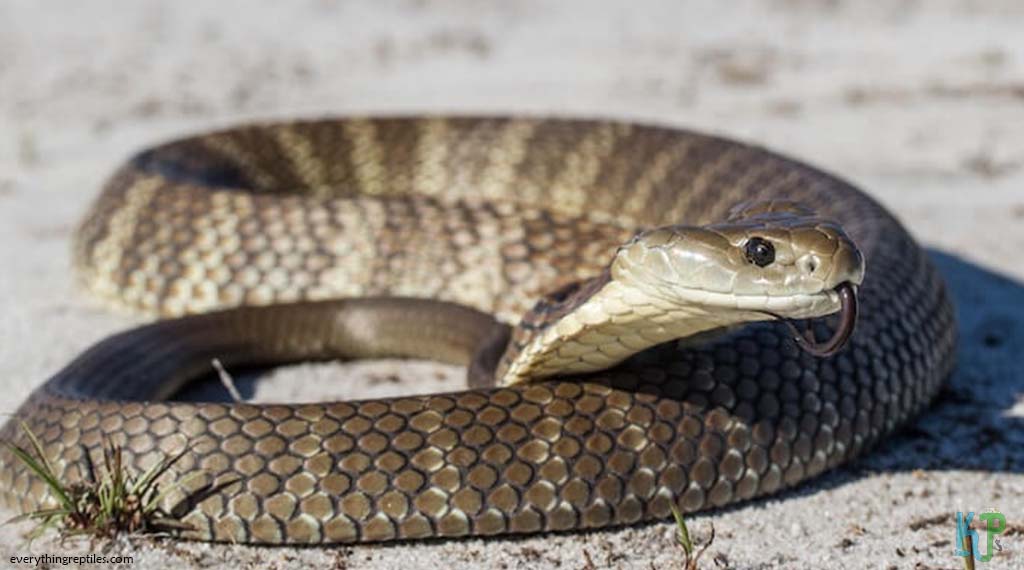
The next deadliest snake in the world is another elapid native to the Australian continent, the Mainland Tiger Snake. They are generally found close to human residences in wet areas of southeastern and southwestern Australia. Their venom is extremely potent, attacking muscles and blood-clotting proteins, as well as impairing the nervous system. This makes it easy for this venomous hunter to take down other reptiles, amphibians, mammals, and birds.
When threatened, the Mainland Tiger Snake will flatten its neck much in the way a cobra does, creating a type of ‘hood.’ Mainland Tiger Snakes get their name due to their scale coloration that has covered in bands resembling tiger stripes, which could range in coloring from yellow and black to tan and bronze.
3. Inland Taipan (Oxyuranus Microlepdotus)
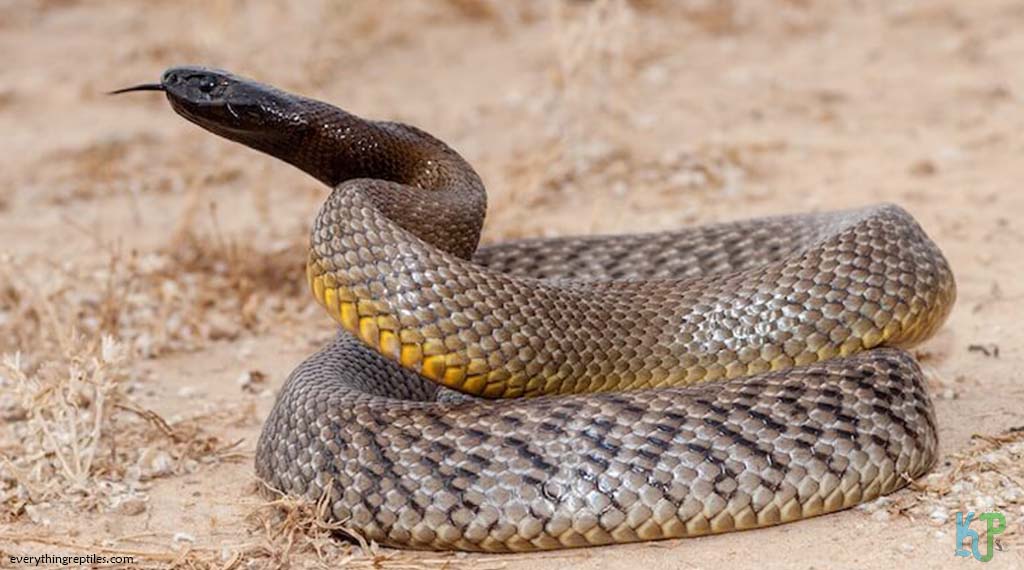
Among the world’s most venomous snakes is the Inland Taipan, which usually tops many of the deadliest snake lists. So just how deadly is the Taipan’s venom? A mere 100 mg dose of its potent venom (the maximum amount able to be injected through a single bite), is enough to end the lives of as many as 100 human beings. It works extremely fast and takes effect in under an hour.
While the Taipan’s venom is among the most potent toxins known to man, on the LD 50 toxicity scale, it ranks third, hence it follows its Australian cousins on this list. Luckily, people hardly ever encounter these snakes. Though they are nicknamed “Fierce Snakes,” the Taipan is actually quite shy and prefers to avoid humans altogether.
With so few encounters between humans and these venomous snakes, the scenario where a human gets bitten by one is exceptionally rare. Inland Taipans sometimes have darker heads with black outlines on their scales and are typically tan or brown in color.
4. Russell’s Viper (Daboia Russelii)
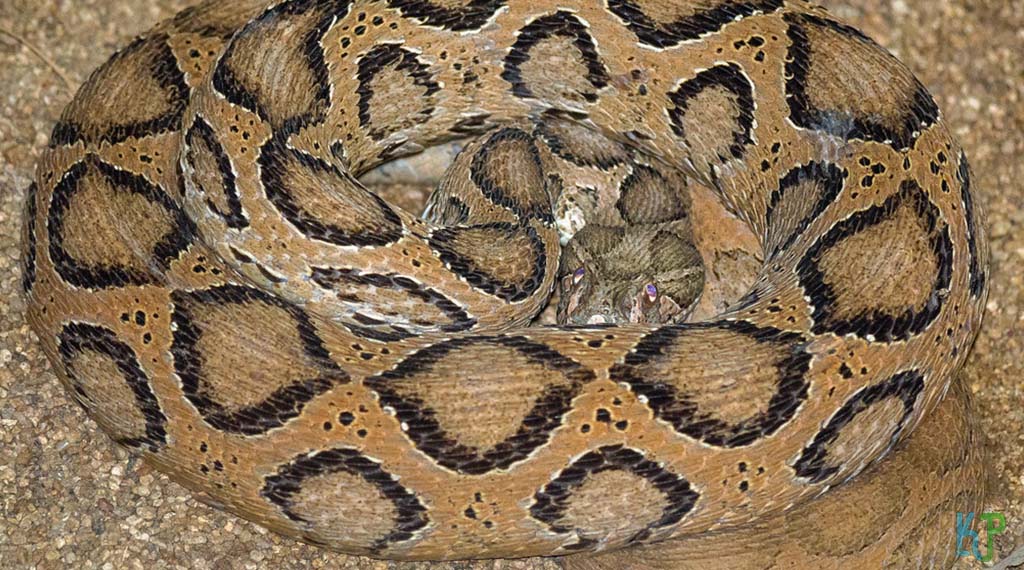
One of the most dangerous Asian snakes is Russell’s Viper, and they live spread out across significant ranges of the continent, found everywhere from Eastern China to Western India. The distinctive pattern of Russell’s Viper makes it easy to identify, and their prolific nature has them as the record holders in most of the serious bites than most other species.
The Russell’s Viper is known for its loud hiss when it feels threatened, intended to ward off what the snake considers to be a form of danger. If the hiss is not effective, it resorts to biting quickly, often injecting its horribly toxic venom in large quantities into its victim.
A single Russell’s Viper has enough venom by volume to put down around 150,000 mice by best scientific estimates. Unlucky for the mice, rodents are the Russell’s Viper’s preferred prey because they tend to be easy to sneak up on and take only seconds to kill with the hemotoxin from the bite.
5. Blue Krait (Bungarus Cadidus)
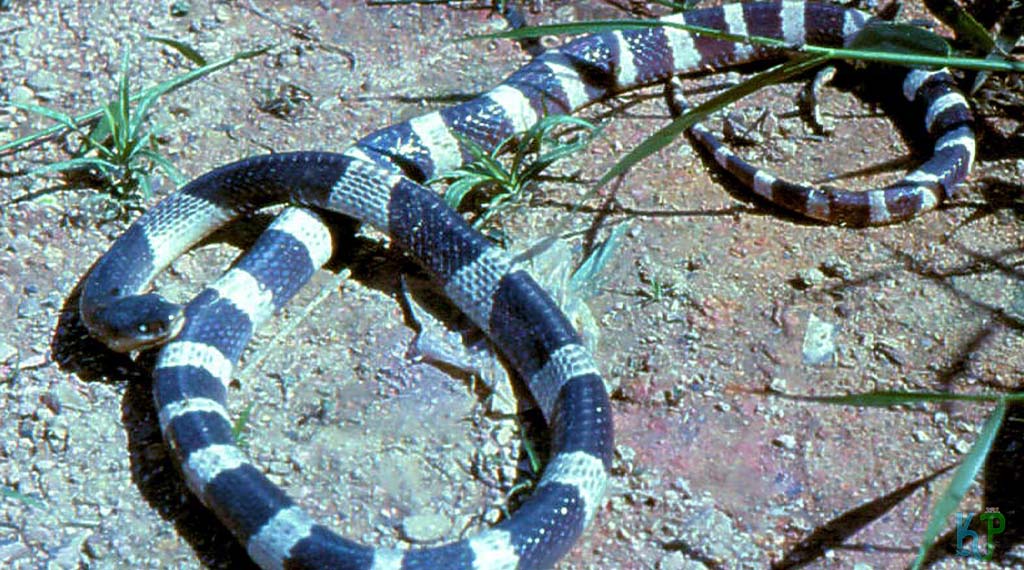
The Blue Krait is another one of Asia’s deadliest snakes, and it is a point hard to argue when about half of those bitten by this venomous snake has succumbed to its lethal venom, even when provided with medical treatments. Their venom contains immensely potent neurotoxins that will cause paralysis, specifically of one’s breathing apparatus, resulting in death via respiratory failure.
Luckily for humans, Blue Krait dwells in wet forests and is hardly ever in the vicinity of humans. Because they are nocturnal, during the daytime they are very easygoing. But while they may be aloof to humans, they feed on many other creatures, most prominently other dangerous snakes. They typically have black bodies adorned with gray, white, or tan-colored bands.
6. Boomslang (Dispholidus Typus Ssp)
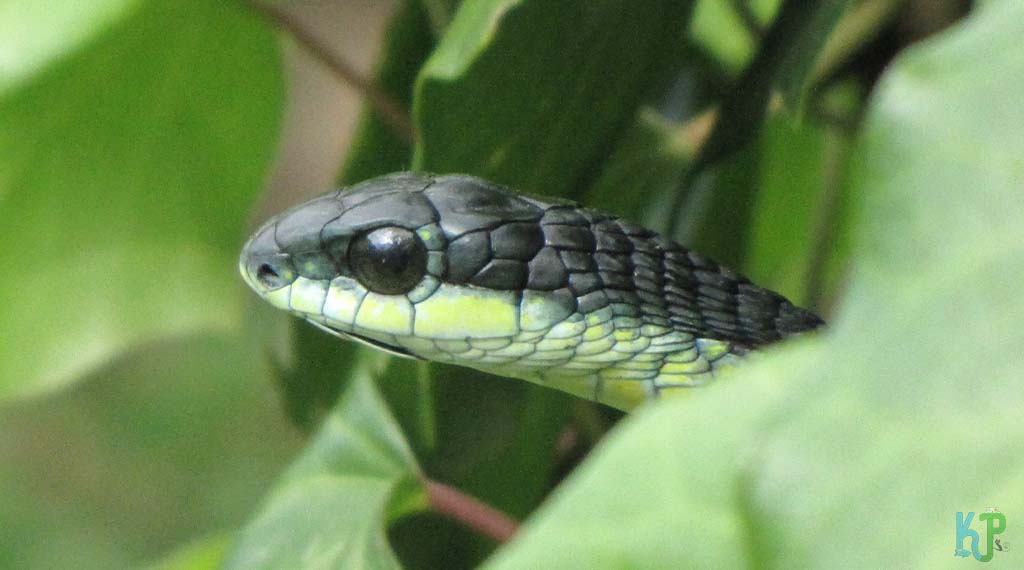
In the Colubrid family, there is no more dangerous snake than the Boomslang. While the toxicity of its venom pales in comparison to the snakes on the list that preceded it, it does possess venom that is the most potent out of all of the other Colubrid snakes. When dispensed through a bite, it will cause extensive bleeding and heavy hemorrhaging.
Not only are Boomslangs capable of killing humans with their bites theoretically, but there have also been recorded cases of this happening before. However, their fangs are positioned in the rear of their jaw, so injecting venom is harder for them than for some of the other venomous species. Perhaps self-aware of their shortcomings, the Boomslang is not out there looking for confrontation.
When threatened, they try their best to scare the source of their heightened nerves away by inflating their throats, and appearing bigger than they really are. They dwell in trees and are very alert, especially when it comes to watching for chameleons and birds that they quickly pounce on, bite, and then hold in their mouth until the venom’s effect sets in. They have keeled scales and can have a variety of patterns. They can be brown, green, black, or grey in color.
7. Mojave Rattlesnake (Crotalus Scutellatus)
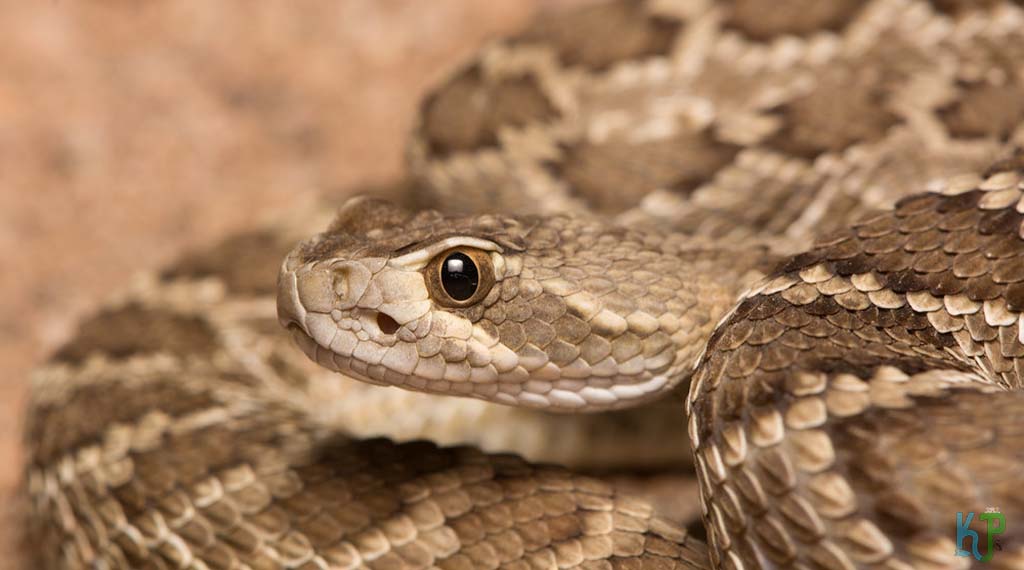
The only venomous snake on this list native to the United States is the Mojave Rattlesnake, one of several rattlesnake species that are found between the North and South American continents. Of all the rattlesnakes in existence, the Mojave Rattlesnake is easily the most venomous. While their venom varies from one species to another, it is rife with hemotoxic and neurotoxic properties. This helps them take down amphibians, birds, mammals, and other reptiles.
In appearance, the Mojave Rattlesnake resembles a Western Diamondback Rattlesnake, though they are not quite as long and are greenish in hue. They are not ones to hesitate to bite when feeling threatened, though their bites are not often fatal. They do, however, account for many of the Southwestern United States’ more serious snake bites.
8. Stiletto Snake (Atractaspis Bibronii)
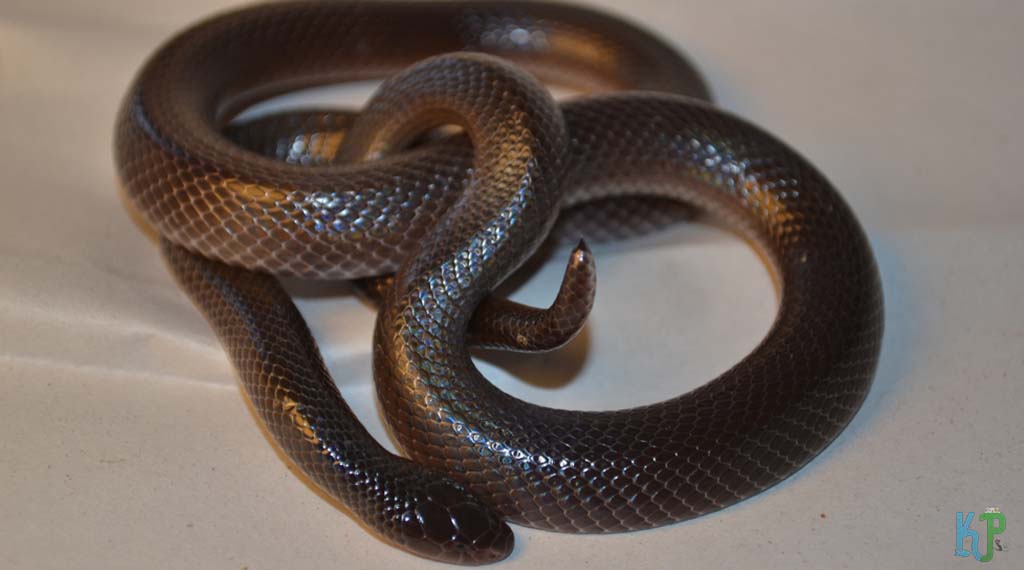
The Stiletto snake is an extremely toxic burrowing snake. Luckily for those who may have been bitten by them, the venom yield from their bite is somewhat nominal. That being said, it is also overwhelmingly toxic, causing local tissue damage as well as impairing the quality of arteries that connect to the heart.
While snake handlers are skilled at handling many venomous snakes, the Stilettos are notoriously difficult, and according to some, almost impossible to safely handle. It is also this list’s only venomous snake that does not belong to the Viperidae, Elapidae, or Colubridae families.
One interesting fact about the Stiletto is that its fangs emerge from the side of its mouth, making them a side-stabber. That also means that Stilettos are unable to strike forward with their bites.
9. Saw-Scaled Viper (Echis Carinatus)
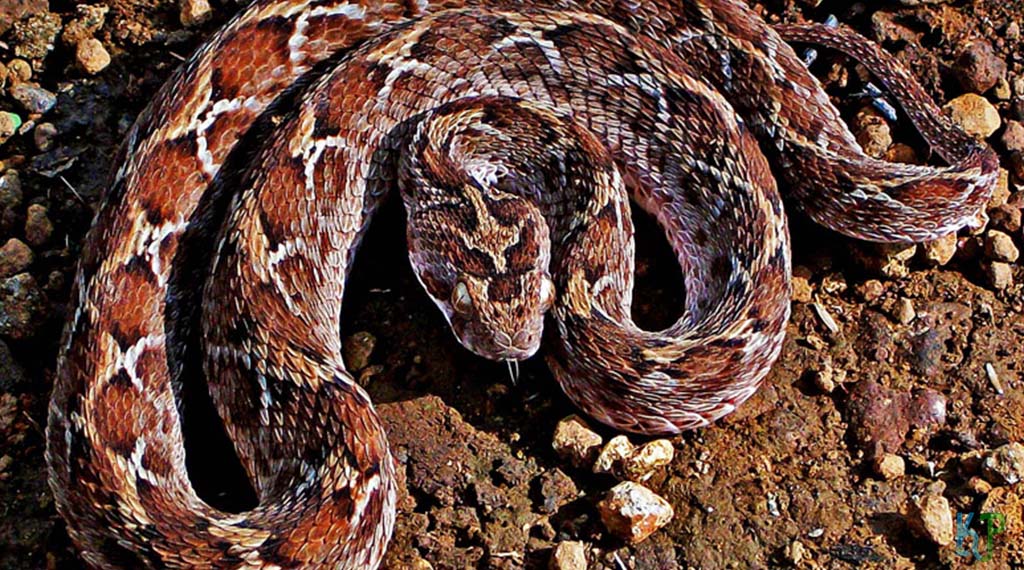
While not the most venomous in the world, the Saw-Scaled viper is nevertheless one of the world’s most dangerous snakes due to its aggressive and irritable disposition, despite its rather small stature. In India, the region they are most commonly located in, they are therefore a significant cause of snakebite-related injuries.
Similar to most other vipers, this snake’s venom is filled with blood clot-disabling toxins that also cause tissue necrosis. If not treated quickly and correctly, the bites could end up proving lethal. Generally, the Saw-Scaled viper uses venom to hunt amphibians, reptiles, smaller snakes, arthropods, and mammals.
Their appearance can be a mosaic of tan, mahogany, and brown coloring. This allows them to hide in the sand, with only their heads protruding for surrounding observation. This makes them hard to spot visually, but if you listen, they try to ward off threats by making a loud rasping noise generated by the rubbing together of their scales.
10. King Cobra (Ophiophagus Hannah)
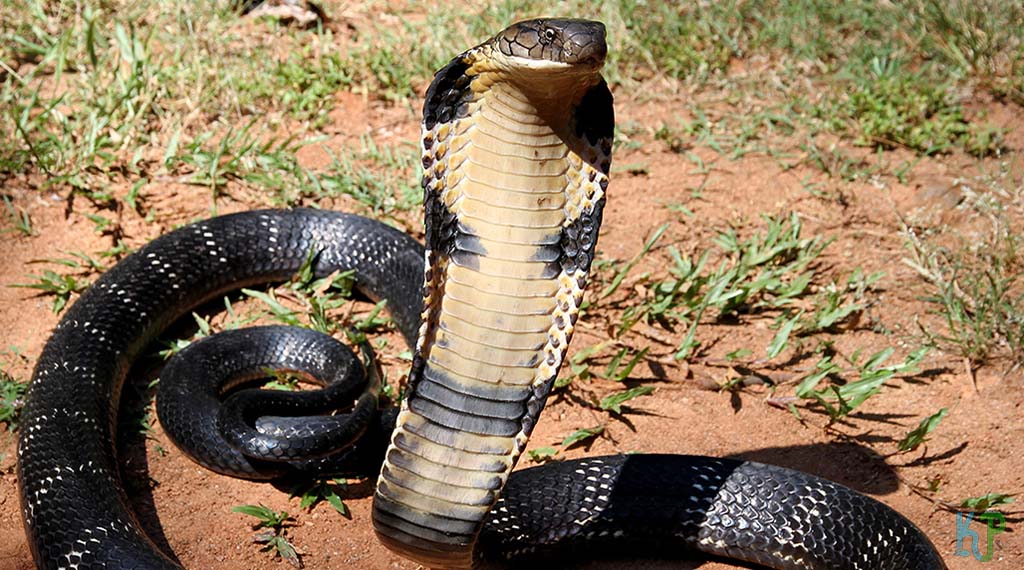
There is a reason why the King Cobra is considered snake royalty. With some members of this species exceeding a body length of an astounding 15 feet, the King Cobra easily takes the title of the world’s longest venomous snake. When a King Cobra feels threatened, it lifts its body off the ground, expanding its neck into a flat hood. The heights their lifted bodies reach vary depending on the length of the snake, but the longer ones could be eye-level with a human in this position.
The venom from the King Cobra is potent, but not nearly as toxic proportionally to the snakes earlier on this list. However, their massive size allows them to inject more of their venom by quantity through bites. The size plays another factor to the snake’s advantage, by allowing it to overpower anything it gets a hold of.
While the popular culture of films and stories has turned the King Cobra into the icon of fear in the snake community, these snakes actually live in deep forests, and as their genus name, Ophiophagus (or “snake-eater”) implies, they prefer to feast on other dangerous snakes.
An interesting fact that distinguishes King Cobras from many other creatures is the fact that when a female lays her eggs in the snake nest, both parents will be nearby to guard their future offspring, a trait not common in the snake world.
11. Coastal Taipan (Oxyuranus Scutellatus)
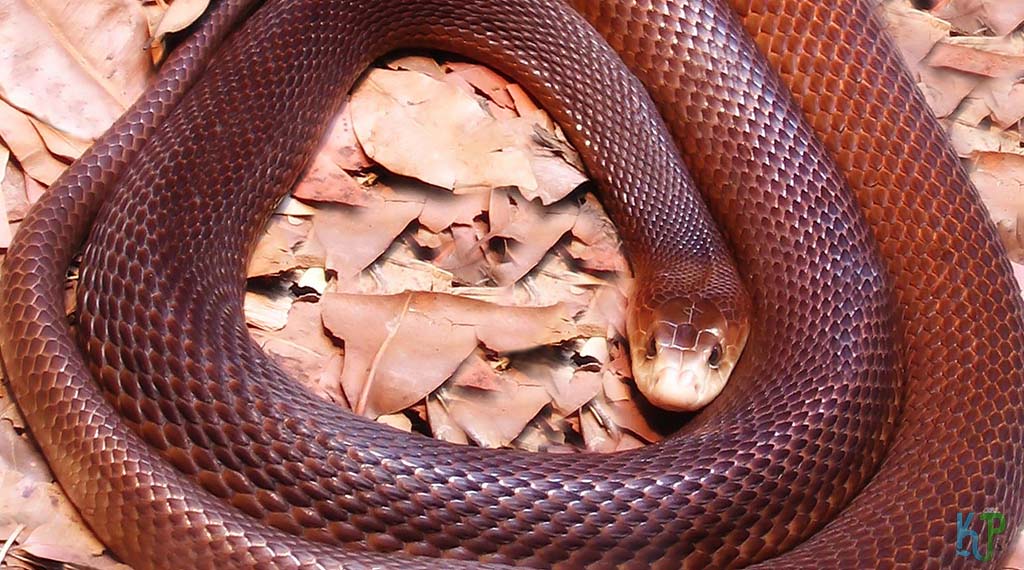
Another Australian member of the 20 most venomous snakes list is a fellow elapid, the Coastal Taipan. While the potency of its venom does not rival the Inland Taipan, it is not significantly behind other venomous snakes in that regard. Beyond that, the Coastal Taipan can grow lengthy, sometimes reaching over 10 feet.
They are also the leader in fang length of any other Australian snakes. Their bodily size, fang length, and aggressive nature make them more likely to bite, and therefore they are considered one of the most dangerous Australian snakes.
The bites of the Coastal Taipan were nearly almost fatal, with the numbers decreasing since the advent of the antivenom. As with most other venomous snakes, their poison impedes blood clotting, impairs muscles, and attacks the nervous system, perfect for taking down larger mammals.
12. Banded Krait (Bungarus Fascatus)
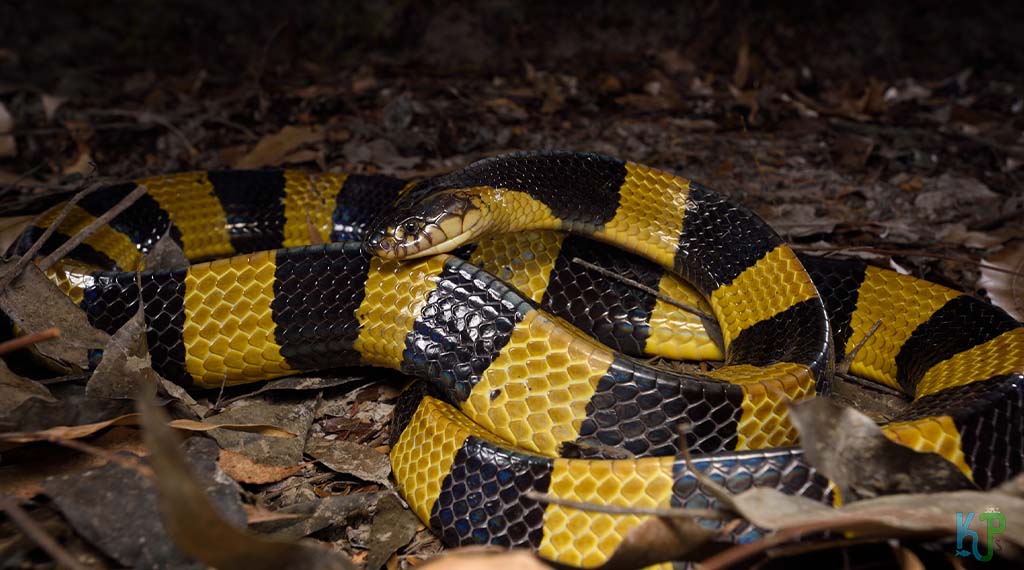
Krait snakes are some of the most venomous Asian snakes, but they are also among the world’s most venomous. The venom of a Blue Krait is extremely toxic, and while the Banded Krait’s toxicity isn’t quite as potent, the neurotoxic properties decimate the nervous system of their victims.
Their diets include mammals and reptiles, but they are primarily eaters of fellow snakes. That might be in part because their venom is particularly effective against them. In fact, they are cannibalistic in the sense that Kraits will eat other species of Krait.
During the daylight hours, Kraits are shy and rarely prone to bite attempts, but nighttime brings out a more aggressive side. Their appearance is quite impressive, as the snake is adorned with bands of yellow and black, and less frequently, white and black, with a very distinct stumpy tail.
13. Common Death Adder (Acanthophis Antarcticus)
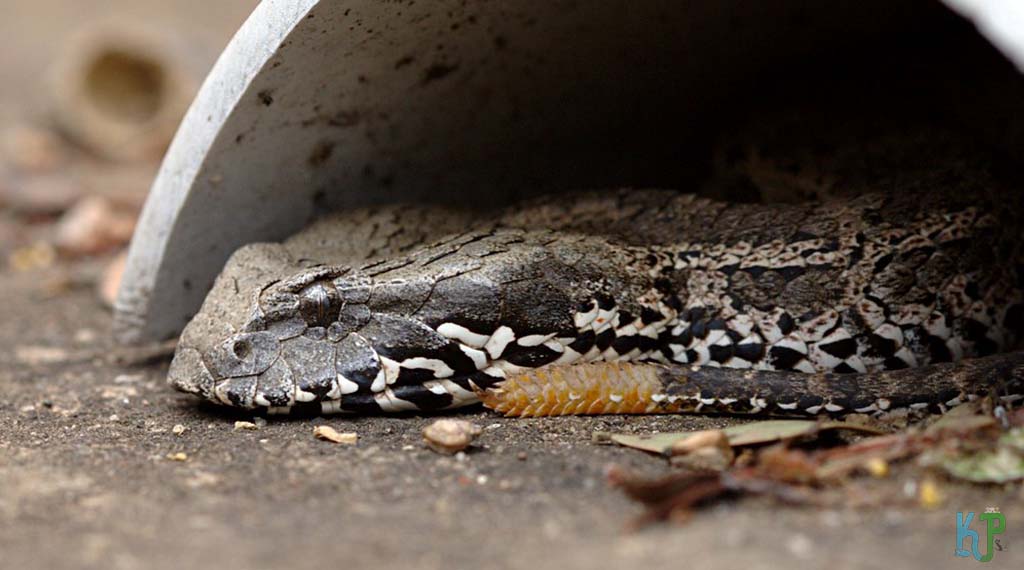
The ironically named Common Death Adder is not so common, as it is one of Australia’s most unique snake breeds. It is short and stocky, like a viper, but since there are no vipers that live in Australia, they do not belong to that snake family. Their appearance typically has orange, bronze, or tan bars across their body.
The Death Adder’s hunting style is based on ambush, employing a tactic known as caudal luring which includes them using their tails to mimic a worm, or ‘lure.’ Once unsuspecting prey, typically in the form of a frog, lizard, or small mammal wonders by, the Death Adder executes something it does faster than almost any snake on the planet, strike, injecting its prey with a highly neurotoxic venom through its bite.
But the value of venom is important to the Death Adder, so they will often dry bite and hold the prey until it is ready for consumption. When venom is injected, they dispense a large amount of it. Unlike many other venomous snakes that live far from population centers, Death Adders live near areas populated by people and pets, making them more dangerous.
14. Beaked Sea Snake (Hydrophis Schistosus)
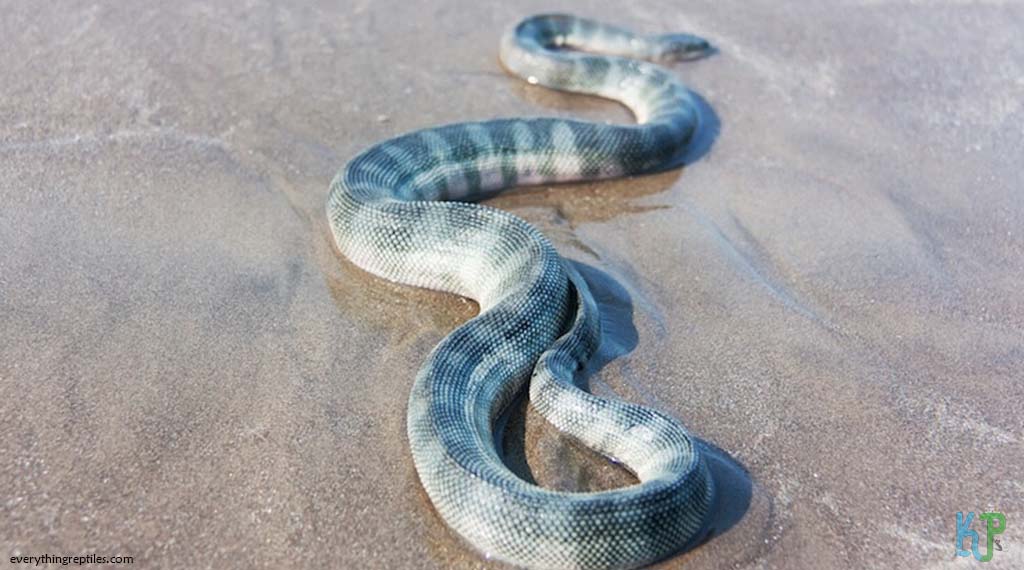
This list has yet to include any sea snakes, so at the fourteenth spot is the Beaked Sea Snake, which is one of the world’s most venomous sea snakes, issuing their highly potent hemotoxic and neurotoxic venom to their victims, inducing muscle damage and paralysis.
These snakes account for the majority of sea snake bites in the world. Common victims include fishermen who are unlucky enough to find these snakes stuck in their fishing nets. In an attempt to untangle them, the fishermen often get bitten.
The Beaked Sea Snake is named such due to the presence of downward-pointed scales on its snout’s tip, making it look like a bird beak. Their appearance is similar to other sea snakes in that they have paddle-like, flattened tail that helps them move through the waters of the ocean.
15. Black Mamba (Dendroaspis Polyepis)
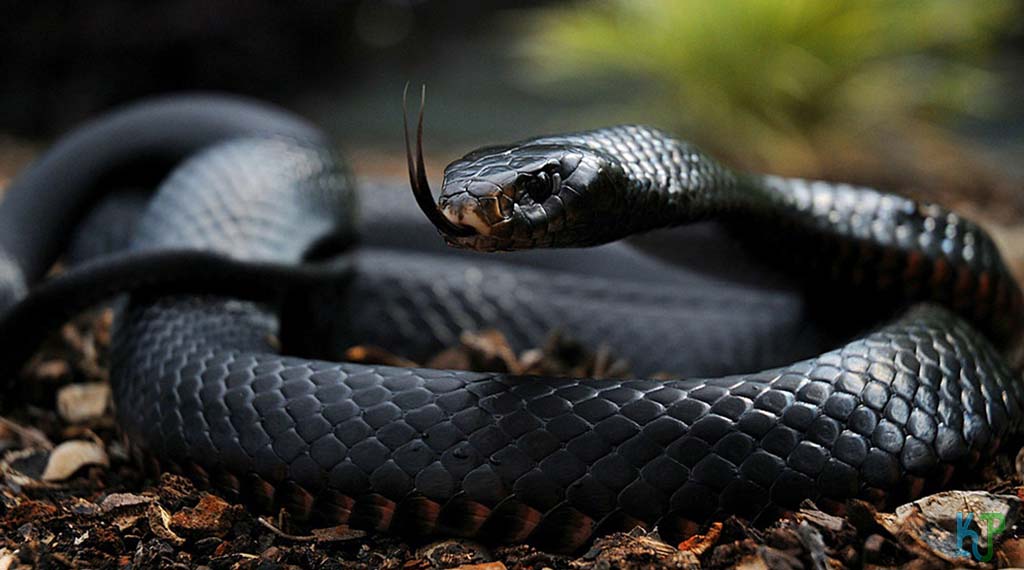
The Black Mamba’s name doesn’t actually describe the color of the snake’s scales, but rather the interior of its mouth which they open to express that they feel under threat. Their scales are actually solid brown. They are agile, alert, intelligent, and intensely temperamental, which, paired with their potent venom, earns them the title of Africa’s most venomous snake. Their agility comes in very handy when it comes to hunting mammals and birds on their home terrain.
The Black Mamba is an aggressive striker, delivering repeated bites and injecting major amounts of venom into its prey, causing systematic paralysis. A human bitten by one must receive antivenom treatment as soon as possible. Luckily, Black Mambas don’t show much of an interest in engaging or interacting much with humans. But if they feel threatened by one, they will not spare their vicious bite.
16. Chinese Copperhead (Deinagkinstrodon Acutus)

The Chinese Copperhead has been dubbed a “hundred pacer” due to the common belief that once bitten, a person is only a hundred steps away from collapsing to their death. It isn’t much of an exaggeration either. The Chinese Copperhead’s venom causes multiple systematic effects, including heart palpitations, that become quickly prominent. The tissue around the bitten area also incurs damage and necrosis due to its venom’s toxicity.
This snake belongs to the Pit viper family and is found mostly in particular Asian countries. They are a cousin of the American Copperhead, though they are significantly more venomous, with venom that reaches a toxicity of 0.38 mg/kg to its American relative’s 2.711 mg/kg.
When the Chinese Copperheads bite people, it is imperative to administer antivenom within an hour of the bite as the toxin is so pervasive that it ends up being lethal. Since antivenom is not readily available to everyone who might get bitten, the bites from this snake result in an unnerving number of fatalities.
17. South American Bushmaster (Lachesis Muta)
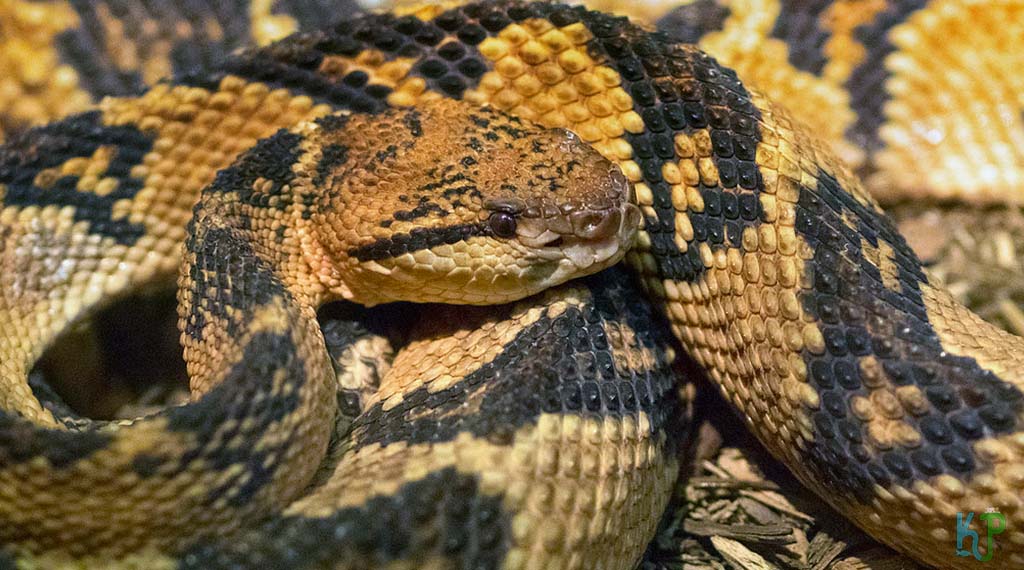
The South American Bushmaster belongs to the Lachesis genus, and is distinctly noteworthy due to their long bodies, with adults reaching a potential of 12 feet in length. This not only classifies them as kings of their species, but it also designates them as the longest vipers in the western world.
Comparative to other snakes, the Bushmaster’s venom is not as toxic as other venomous snakes, but when they bite, they inject massive amounts into the unlucky recipient. The worst thing is, medical treatment only goes so far. The bites are 75% fatal, irrespective of the administration of antivenom or other medical treatment.
Luckily, these snakes are rarely seen, so humans do not endure their venomous bites often. Really, the only people actively seeking them out are herpetologists eager to study the fascinating creatures.
18. Fer-De-Lance (Bothrops Asper)
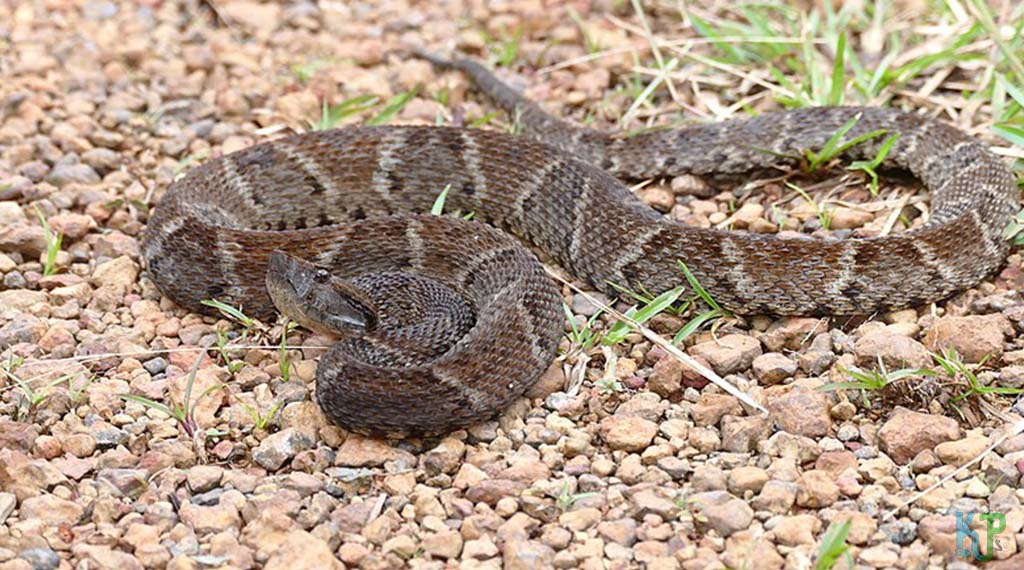
The Fer-De-Lance is a formidable predator and accounts for at least 90% of damaging snakebites in the region where it is found (mostly Central America and the northern parts of the South American continent). These pit vipers are armed with harmful venom that causes muscle damage, tissue necrosis, and systemic bleeding. These snakes mostly feed on rodents, against whom this venom is highly effective. Unfortunately, those humans unlucky enough to be bitten, suffer similar effects.
Fer-De-Lance snakes are attracted to farmlands in search of food so they come in contact with people quite often. Farmers, as well as other residents of these farmlands, fear them to an extreme degree.
Depending on the region, people refer to these terrifying vipers by different names, most reflective of the snake’s appearance. Some call it Fer-De-Lance (arrowhead), some refer to it as the Terciopelo (velvet), while others name it the Barba Amarilla (yellow throat). Not surprisingly, the snakes have arrow-shaped heads, yellow throats, and velvety skin.
19. Belcher’s Sea Snake
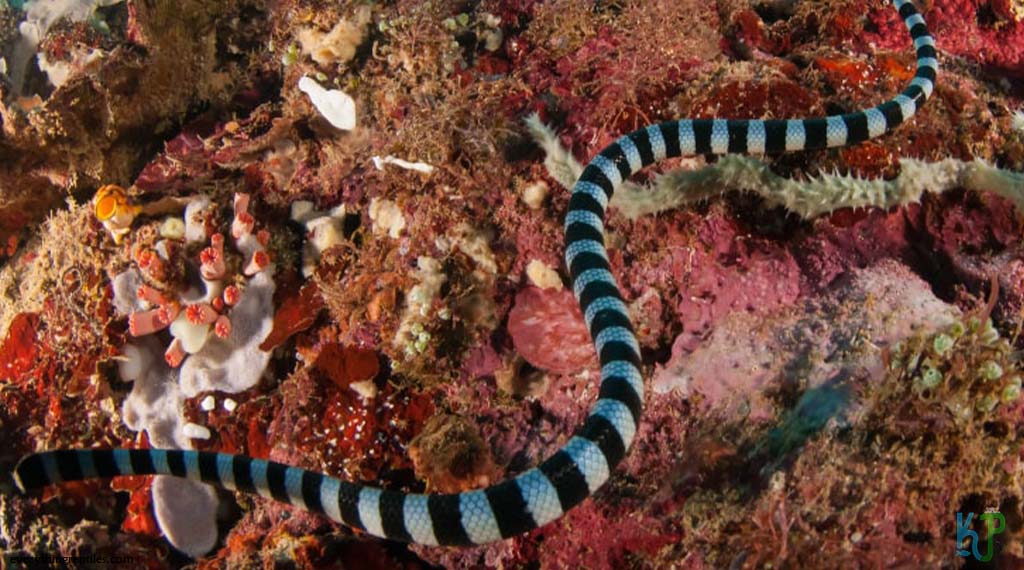
While many refer to the Sea Snake of Belcher as the most venomous sea snake in existence, the truth is its insufficient LD 50 toxicity doesn’t rank them quite as high as some may believe. Having said that, they are still easily among some of the world’s most venomous creatures.
Many are deceived by their size since these snakes rarely exceed a length of three feet, but they more than make up for their smaller length with the toxicity of their venom, which is an effective source for them catching fish. Luckily, they do not pose a major threat to humans, and bites are pretty rare. This is because their mouths are small, so any body part that is larger than a finger would prove very problematic for them to chomp on. On top of that, they are not aggressive by nature. Their appearance is of a pretty pale-blueish-gray coloring, separated by darker-colored bands.
20. Blue Malayan Coral Snake
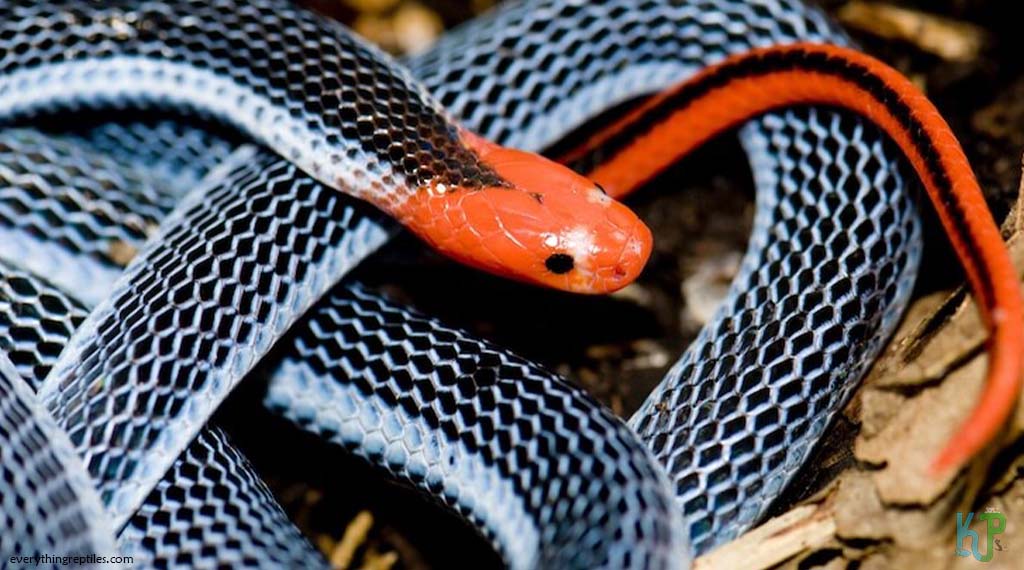
One of the most unique-looking snakes with a black body, red head and tail, and bright blue stripes is the Malayan Blue Coral. Of any snake on the planet, the Blue Malayan Coral snake has the largest venom gland, measuring a foot in length, and equating to about a quarter of its body length.
Their venom is a form of cardiotoxin, a toxic substance that affects a prey’s sodium channels, causing every nerve to respond at once, simulating an essential full-body spasm. While that is quite intense, when one considers that some of their prey involves King Cobras, it is understandable why they would need it.
The more terrifying part is that there is no antivenom for these snake bites. Fortunately, their contact with humans is very minimal, with only two deaths in the last century being reported as attributed to a bite from the Blue Malayan Coral snake. While they are not this list’s most dangerous snakes, they are arguably the most unique.
Conclusion
The topic of venomous snakes is as fascinating as it is complex. Interestingly, their venom, while naturally designed for harm infliction, actually has healing potential. Some venoms are fatally toxic to particular animal groups while having only mild effects on others. Understanding the nature of each snake’s venom is pivotal, though many of the countries where venomous snakes are prominent also have less-sophisticated healthcare facilities, many of which cannot properly treat snakebites.
By accounts from the WHO (World Health Organization), there is an average of 5 million people bitten every year by venomous snakes, resulting in anywhere between 80,000 and 140,000 annual fatalities. Not surprisingly, these deaths largely occur in less developed countries where people are more likely to come in contact with these snakes and less likely to receive adequate treatment for the bites.
So which of the deadly snakes did you find more impressive or terrifying? Did you learn any surprising details about venomous snakes? Let us know!
Don’t miss out on the next article in our series on snake shedding! Learn about the timeline and process of shedding, and how to properly care for your snake during this important time. Click here to read now!
Frequently asked questions:
What is the most deadliest snake in the world?
The most deadly snake in the world is the Inland Taipan, also known as the “Fierce Snake” or “Fierce Poison.” Its venom is highly toxic, capable of killing a human in as little as 45 minutes. It is found in Australia.
What snake has the deadliest venom?
The snake with the deadliest venom is the Inland Taipan or Fierce Snake. Its venom is highly toxic and can cause symptoms such as paralysis and death. The venom of this snake is also known as “fierce snake venom” or “fierce venom.”
Are corn snakes venomous?
Corn snakes are not venomous. They are constrictors and kill their prey by suffocation rather than venom. They are also commonly kept as pets due to their docile nature and bright coloration.



